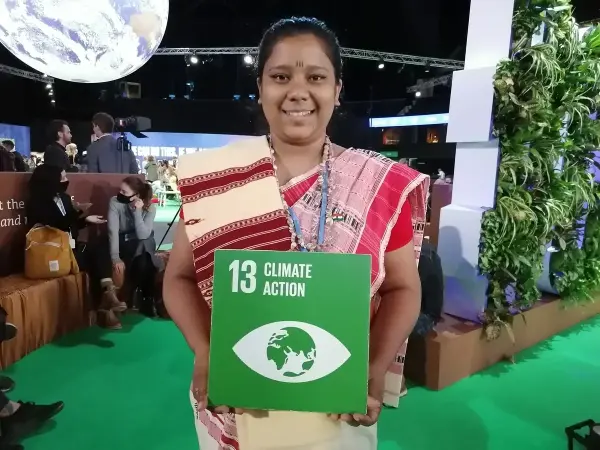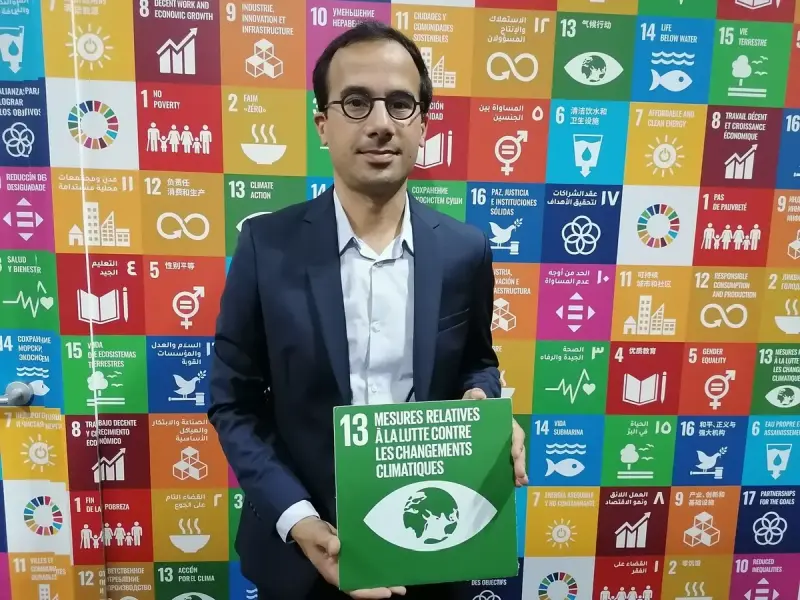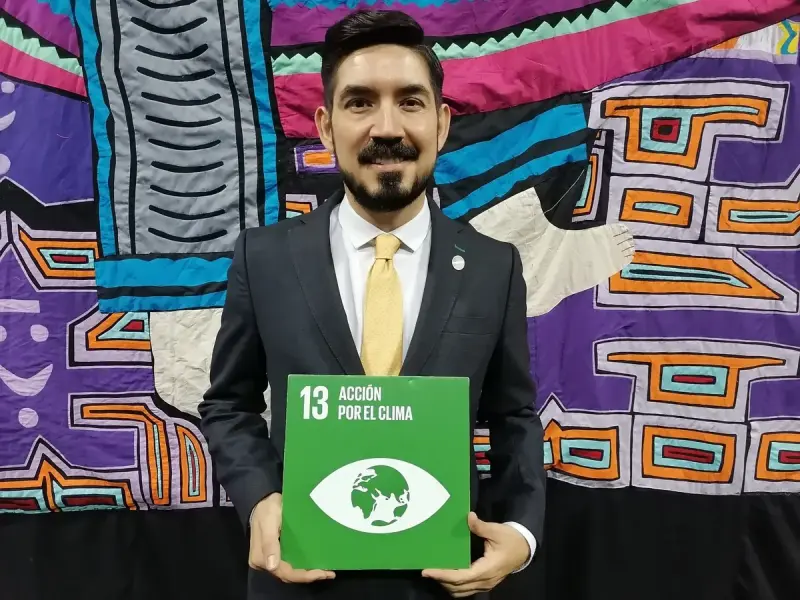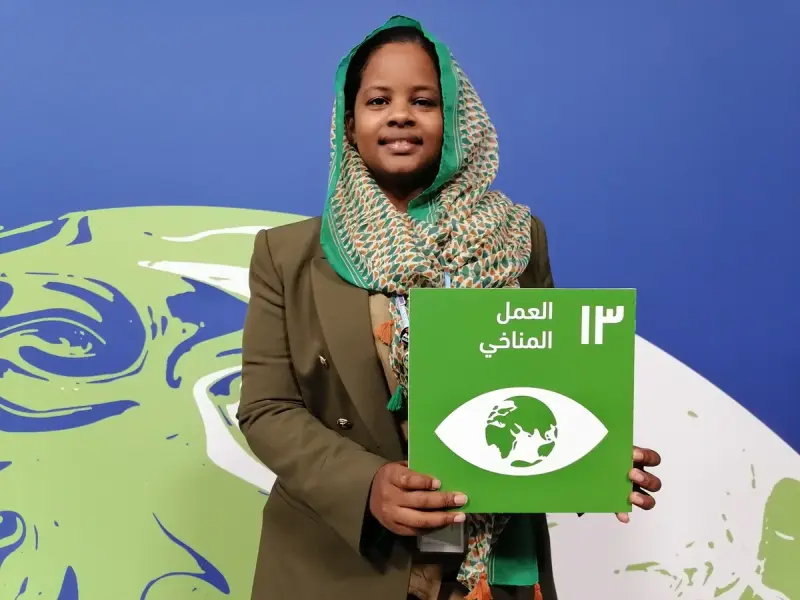How do I take action?
As the climate justice movement has emphasised for a long time, climate change is not simply an inevitable by-product of human development. It is the result of an economic system designed to hoard wealth and resources for the rich, at the expense of the global majority and the ecosystems we all depend on for survival. Transforming this system is a huge task, but one that can be achieved through collective social action. This means ordinary people working together to act as a powerful movement. It may be a cliché, but there is strength in numbers.
Different kinds of social action
Social action has many names and can take many forms. You might hear it called ‘activism’, ‘organising’ or – by Quakers – ‘witness’. You might be familiar with actions like organising or participating in strikes and demonstrations; taking direct action such as blocking roads or occupying buildings; setting up community projects; taking legal action; or lobbying decision-makers. Forms of social action like childcare, emotional support, cooking or administrative tasks are less recognised but are essential to building and sustaining movements.
Social action is any activity that contributes to building and sustaining movements for progressive change. Creating change requires many different forms of social action taken by many different people working towards shared aims.
The social action journey
In the previous section of this action guide, we explored what we mean by ‘social action’, as well as the many different forms it can take. In this section we’ve put together what we like to call the ‘social action journey’ to give you a framework for taking social action. We’ve set out the four key stages of our social action journey: Learn; Connect; Take action; and Build for the future.
You’ll see that we’ve outlined many different ways in which you can explore each of these stages. We’ve also provided some case studies at the end.
We hope this framework will help you to get started on the social action journey. Please don’t think of it as a stepby- step guide. You don’t have to do it in the following order or use all the ideas we’ve suggested. Our aim here is to support you in thinking more strategically about taking social action.
Learn
The first part of our social action journey involves creating opportunities for learning together. It’s about developing a shared understanding and analysis of the issues you want to address, and starting to build a sense of community within your group. There are many different ways you can do this.
Ideas include:
- Setting up a reading and discussion group We have lots of resources you can use as inspiration for this, from our climate justice resource list to our new economy booklets. If you’re not sure how to do this online and would like to speak to other Quakers about this, email us at climatejustice@quaker.org.uk.
- Hosting a film and discussion night We suggest you start by thinking about the issue you’d like to focus on and then looking for any films or documentaries that explore that issue. You can also have a look at our climate justice resource list. If you’d like to host your discussion online, why not share a link to the film or documentary for everyone to watch at home and then host a Zoom meeting afterwards to discuss?
- Hosting or attending a workshop We will be hosting regular workshops on climate justice and the climate talks this year. Sign up to Quaker Faith in Action (tick ‘climate justice and sustainability’) to hear more about these. There will also be opportunities to attend lots of workshops at the COP26 Coalition’s second online global gathering, ‘From the Ground Up’, in April 2021. Why not attend a workshop together or send someone from your meeting or group? Whoever attends could then run a session to share what they’ve learned.
- Inviting a guest speaker As meetings have moved online, opportunities have opened up for people to come together who couldn’t previously. Is there a speaker or group you find inspirational? Why not contact them to ask whether they’d be interested in speaking at an online meeting? Before you invite them, think about how you might compensate them for their time. This is particularly important if they’re not paid to work on the issue you’ve asked them to speak about.
- Creating a shared mural or hanging We all process information in different ways, and exploring an issue visually can be a thought-provoking way of learning together. You can read about this kind of approach in the Loving Earth Project case study below.
Connect
Connecting is about building relationships with others who are taking social action, or who are affected by the issues you want to take action on. These relationships are essential to building and sustaining movements.
You might want to start by reaching out to local campaign and community groups. These could be groups focused solely on climate issues, but it’s useful to consider groups working on broader justice issues as well.
For example, you could approach groups campaigning for:
- affordable housing and an end to gentrification
- improved public transport
- an end to poverty (particularly fuel or food poverty)
- more public spaces.
These campaigns may not have a specific focus on climate change, but they’re often working towards aims shared by climate campaigners.
Community groups may well have valuable experience of the issues you want to take action on. And they may be happy to share their thoughts, or even collaborate, so try connecting with:
- other faith groups
- youth groups
- arts and crafts groups
- cultural groups
- neighbourhood groups.
When approaching others, it’s useful to do so with a view to learning from them and finding out if there are ways you can support work they are already doing. Don’t focus immediately on getting people to join your group or campaign as this can get in the way of truly connecting with them. The people you reach out to may not consider climate change their number one priority; they may even be hostile towards the climate movement. It’s important to listen to their concerns, experiences and analyses in order to understand what it might take to build alliances with them.
Once you’ve made connections with other groups and individuals, start to think about and discuss shared aims. Are there ways in which you can support each other?
Do you want to develop a specific campaign with several groups around one of these shared aims? Do any of the groups you’ve connected with have specific needs that you could meet?
Build for the future
“Respect for the climate, like all ecological protection, is inseparable from the struggle for democracy, for freedom and for justice” – Ka Hsaw Wa, Co-founder and Executive Director of EarthRights International
We’ve put together this action guide to help you take action ahead of, during and after this year’s UN climate talks. However, we know that whatever agreements are reached, these talks won’t immediately solve the climate crisis. Large-scale systemic change is the only way to prevent climate breakdown and build climate justice. This won’t happen in the space of a few months, which means we need to find ways to sustain, broaden and deepen our social action. Here are some steps you can take towards long-term action.
Step 1: How does change happen?
There are many different ways to create change, but often we don’t do enough to understand what’s effective and what isn’t.
1. Start by thinking big: what would you like to see happen in the next ten years? Consider what would need to happen in order to get there, what are the obstacles and who are the key groups of people that need to be involved in making these changes.
2. Now consider what you know about how change happens: can you think of examples of ‘big wins’? What do you know from your own experience about how change happens? If you can’t think of any examples of effective methods for change, do some research into the history of different campaigns and movements, or perhaps try talking to someone you know who has been involved in social action for a long time to find out what they know about creating change.
3. Develop your ‘theory of change’ as a group. This is a shared view on how your group thinks change happens, and therefore the kind of strategy you will take. This could be a long, detailed document, a simple paragraph or even a diagram. The question of how change happens is complicated and can be overwhelming, so try not to worry about finding the perfect theory of change – ultimately, you’ll learn what works and what doesn’t by trying things out. But it’s useful to have a starting point you can return to and reflect on.
There are many resources online that will help you think about your theory of change, so do have a good look around. How about this great interview with US organiser Jane McAlevey, in which she outlines her approach to creating change? Or this detailed report by Hackney Unite on different approaches to and theories of creating change?
Step 2: How will we care for each other?
This is a fundamental but often overlooked aspect of building movements to create change. Care is the basis of every community, but it’s absolutely vital for communities engaged in long-term social action in the face of injustice. 1. Start by asking what forms of care you are already providing in your group. . How are you supporting one another (e.g. what kind of care already exists and who is providing it)? . Is the work they are doing recognised by the rest of the group? Are they supported by the rest of the group? . How do you deal with conflict when it arises? 2. Think about what might be missing. . Have people experienced burnout and had to step back from the group? . Are there barriers for people who might want to get involved? For example, would someone need to find childcare in order to join a meeting? Is there a variety of ways for people to contribute to the group? Are you able to provide things like food and accessible toilets for meetings and events?
. Do you make space for fun or social activities as a group? Do people know each other well enough to feel able to trust each other?
Start planning to embed care.
. What kinds of structures are needed to make sure people in the group feel supported?
. How will you make sure your level of activity is manageable and not exhausting for participants?
. How will you make people feel comfortable to share their access needs and ask for support when they need it?
Again, don’t worry about answering all of these questions at once, or about trying to design the perfect structure for care. You will learn as you go. Just make sure you are mindful of the need to care for each other and of who is doing the work.
Step 3: How will we keep learning?
A big problem for groups working for social change can be finding the time to step back, reflect and then apply what’s been learned. Because of the urgency of many of the issues we face, people often feel like they ought to be engaged in action at all times and can’t afford to pause and take stock.
However, if we don’t stop to reflect on and apply what we’ve learned, we could waste years doing things that are ineffective or even counter-productive. Try to build in time – at least a few times a year – to come back to your theory of change and review it based on what you’ve learned.
These reviews could take the form of formal meetings or more relaxed social occasions. You could even hold regular reading groups or skillshares with groups you’ve connected with.
Most importantly, make sure you recognise and celebrate your wins!
Building for the future resources As mentioned above, the Quaker nonviolence and social change programme Turning the Tide has a range of resources to help people build sustainable movements for change.
The New Economy Organisers Network (NEON) provides resources for developing a long-term strategy for your group. Resources from the Framing Climate Justice project explore how to talk about climate justice effectively to ensure your group’s message is understood.
Download taking-action-for-climate-justice-2021





